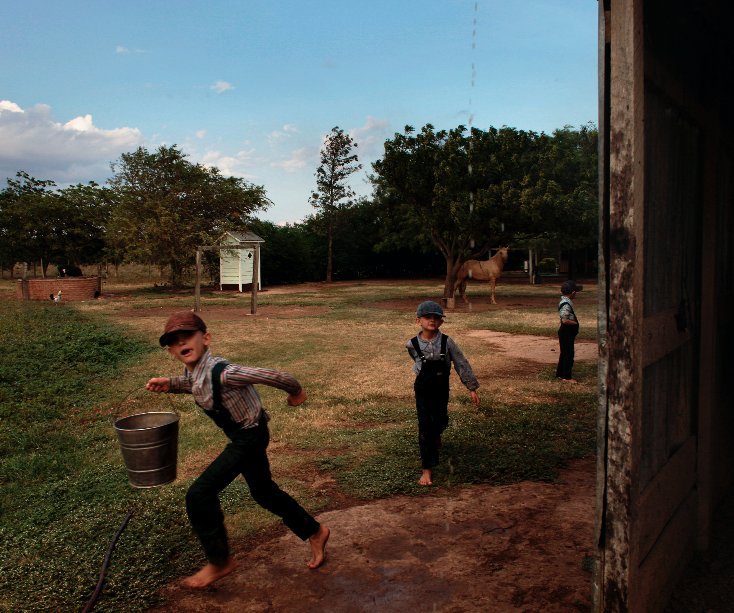The Mennonites of Manitoba, Bolivia
de Lisa Wiltse
Voici le prix vu par vos clients. Éditer la liste des prix
À propos du livre
The Tranquility of the Mennonite settlement of Manitoba in eastern Bolivia was
transformed into fear and confusion when, this past June, suspicions were confirmed that at least 100 women and girls were raped by members of their community. The accused, ranging in age from 18 to 41 years old, targeted the women in the community's homes, They sprayed a narcotic substance that rendered the women unconscious and then raped them.
Now many teenage victims fear they are unable to marry because the Mennonite community requires that its women remain virgins until marriage in order to retain the respect of their peers.
These events have shaken this conservative colony to its core Manitoba is located about 152 kilometers (94 miles) northeast of the city of Santa Cruz with a population of about 3,000.
Horse-drawn buggies, farmhouses with manicured lawns and fields planted to the horizon with soybeans and sorghum. Mennonites have tended to lead quiet, dedicated, religiously inspired lives. They are known for their espousal of non-violence.
Their European features and distinctive clothes separate them from other Bolivians. The Mennonites settled in eastern Bolivia's farmlands more than 50 years ago. They came from Mennonite colonies in Canada, Russia, Mexico, Belize and Paraguay, looking for a better life.
They live simply, dress plainly and refuse to use many modern conveniences. They trace their spiritual ancestry to a 16th century European preacher named Menno Simons, whose followers became known as Mennonites. Today, some 60,000 Mennonites call Bolivia their home. Their colonies are broad expanses of land given to them by the Bolivian government. This is where they live and work, sheltered by the government's promise of freedom of religion, exemption from military service, and the privilege of running their own schools. These images capture the Mennonites of Manitoba in their everyday lives, now struggling to erase a recent painful past and continue to live
their lives separate from the outside world
Caractéristiques et détails
- Catégorie principale: Livres d'art et de photographie
-
Format choisi: Format paysage, 25×20 cm
# de pages: 54 - Date de publication: juil 15, 2010
- Mots-clés human interest, Mennonites, travel, editorial, Bolivia, traditional, documentary, photojournalism
À propos du créateur
Born, 1977 USA Current location is La Paz, Bolivia I am drawn to the young, poor and the powerless whose voices deserve to be heard. I feel compelled to work with people who are on the fringes of society and am particularly interested in telling stories of childrenʼs lives around the world. They have a raw intelligence and creativity that adults can listen and learn from. I would like to think that my stories will improve the lives of the people I photograph. I try to reflect their everyday lives and promote a dialogue and understanding among people. Publications and Clients include: TIME magazine, Internazionale, Private Photo Review, Geo, Fader, UNICEF, Double H Ranch, The Australian Financial Review, The Sydney Morning Herald, Bloomberg,among others

